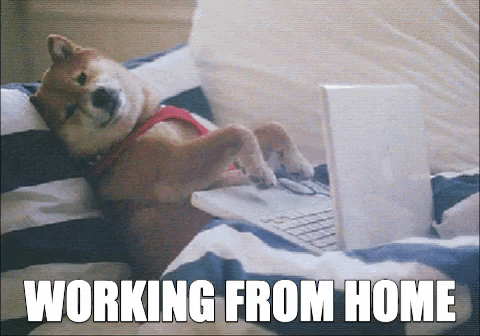
After the relentless twists and turns of the last three years, it’s safe to say that HR professionals are the unsung workplace heroes of the pandemic. Managing stand-downs, redundancies, and reduced hours, all while managing employees from afar, were just some of the many curveballs thrown their way.
It was a time when no two days were the same. It was a time when bad news was broken to colleagues daily. And it was a time that was tiring, challenging and exhausting – no wonder that 82% of leaders reported exhaustion, indicative of burnout risk.
What is employee burnout?
When you think about burnout, you would associate it with prolonged periods of stress and exhaustion.
It can be caused by:
- Having too much work on your plate and feeling overloaded;
- A lack of reward and recognition for the work that you’re doing;
- A lack of control or fairness over the work that you’re doing or;
- Mounting pressure, increased responsibility and stressors;
- A lack of support or trust.
This can have a negative impact on your mental health, colleagues and overall experience at work. Before we dive in, we want you to remember one thing – experiencing burnout doesn’t necessarily mean that you dislike your job or your work.
What about HR burnout?
Managing the HR function of a business can be challenging at the best of times – add in a pandemic, and it increases tenfold. We know that HR leaders are wired to put the needs of employees above themselves.
The ability to switch off from work becomes harder, and it can begin to take a toll on your mental health. After being thrown countless curveballs throughout the pandemic, we know you’re tired.
For many HR teams, redundancies, team restructures, and stand-downs were top of the pandemic priority list. Balancing employee wellbeing while trying to reach higher business targets with fewer resources saw stress levels skyrocket.
Not to mention the low employee morale and the challenges that came with shifting an entire workforce to remote work. It’s no surprise that 70% of HR leaders said 2021 was one of the most stressful years of their careers.
What are the signs of HR burnout?
Burnout can look different for everyone. For many, it will present in ways that make you feel overwhelmed and emotionally drained.
You may find your HR team struggling with work-life balance, being unable to switch off from work, and are showing signs of emotional exhaustion.
This could be irritability, anxiety, mood swings, a decrease in the quality of work produced, retracting from social events and encounters, fatigue, sensitivity and overall disengagement.
How to handle burnout for HR teams
Naturally, when these signs are front and centre, most employees are more likely to have an increase in absenteeism.
It’s time to put your own oxygen mask on first. Here are six ways to handle HR burnout as an HR professional in 2024.
1. Have meaningful one on ones (1:1s)
One-on-ones are scheduled weekly or fortnightly catch up that an employee has with their direct manager. This is time dedicated for the employee to talk through how their past week or fortnight has gone, as well as commit to things for the future.
While they’re a great tool for allowing communication to flow more easily, they’re an even better tool for sharing how you’re really feeling. It’s likely that your one-on-one is with an HR leader.
This creates an open and safe environment to discuss any challenges and communicate how you’re really feeling. It gives both you and your employees the ability to identify any signs of HR burnout as it’s likely everyone in your team is feeling the same way.
2. Be aware of your own mental health
Mental health in the workplace has never been more important – and for a good reason. The pandemic and ongoing lockdowns were a stressful time for everyone, and now it’s time to focus on yourself.
As we outlined above, make sure to be aware of the signs of burnout to look out for. This should make it easier to identify the onset, and if you do, know that it is completely normal to ask for help for your own wellbeing.
If you feel any of these feelings for a period of one week or more, a good starting point is making an appointment with your GP, reaching out to your EAP, or talking to a trusted friend or family member.
3. Reach out to your employee assistance program (EAP) and encourage your fellow HR professionals to use it
Prior to 2020, research showed that approximately one in five workers suffered from a mental health condition at any one time. Throw in a pandemic, increased feelings of financial insecurity, social isolation, and uncertainty around the future, it’s expected that this statistic has risen exponentially.
An EAP will allow you to talk to an external qualified professional to support your mental health and wellbeing. Calls and messages are confidential and can help you navigate feelings of burnout and stress management in 2024 and beyond.
Looking for an EAP provider? Get in touch to learn more about how Employment Hero can support your team.
4. Look out for your fellow HR professionals
The last two years were tough, and like many HR professionals, you would have put your co-workers’ wellbeing above your own.
If you’re still working remotely, make an effort to stay in touch with your team and regularly lock in time to catch up. This could be a quick call in the morning over coffee or an afternoon team bonding session.
Take a look at our 39 free online team-building games for remote teams for some inspiration.
If you notice one of your employees experiencing some signs of burnout, let them know how to access the EAP.
5. Take time off and actually switch off
We know this is easier said than done, and many HR professionals haven’t taken any time off over the last two years. If you’re looking for a sign to switch off and take some time out for yourself, this is it.
Put in that leave, book that vacay, and get ready to relax with some much-needed self-care and personal time (without your laptop!).
If you can’t resist the temptation of looking or thinking about work, try packing down your desk completely (if it’s in your living room or bedroom) and putting your laptop in a case and away in your drawer.
Give a co-worker your mobile number, but let them know it’s for emergencies only!
6. Take advantage of flexible scheduling and remote working
Do you live to work or work to live? If you’re experiencing signs of burnout, you might get the feeling that you’re confined to your desk for the full workday. Don’t let this be your reality.
The pandemic showed us that we could operate just as effectively when working remotely. Now’s the time to embrace it.
Break up your days by going for a walk, grabbing a coffee or heading to the gym. Work will always be there, and coming back to it after a short break is not a bad thing!
Use the flexibility that comes with remote work to your advantage – your mental and physical health will thank you for it!
And if the office is available, pencil in a few days a month to head in with your co-workers.
Burnout is tough, but we’re here for you
We know that HR professionals and HR leaders are juggling many things. Take one thing off your plate and automate your HR and payroll functions.
Going digital can remove the repetitive, time-consuming admin that comes with managing people, giving that precious time back in your day you’ve been longing for.
You might even have the time to work on that employer branding project you’ve been so desperate to start. Take a look at our end-to-end employee platform here.
Look after yourself and your HR department. Download our mental wellbeing pack.
Workplace wellness bundle
